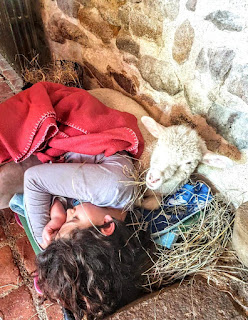Did you know Columbia has just passed legislation banning bullfighting! Another small step towards sanity, but still a mountain to climb. There are seven countries left that continue, France being one if them. Warning, if you read further it has references to the horror of bullfighting.
Our beautiful Jack
Southern France has a bullfighting tradition dating back to around 1289. That year, the Running of the Bulls was first recorded at Bayonne, down the coast from Bordeaux. Currently, bullfighting is slowly becoming less popular in Spain, Catalonia has effectively banned the sport, whereas in France, the corrida is well and truly alive.
France is set to become the bullfighting centre of the globe: an estimated 1,000 bulls per year are dispatched in French arenas. Jerome and I have been to a rally outside of one, where the use of tear gas was exceptionally and gleefully used. While we listened to screams and bellows of sentient animals and the mindless bloodlust of the humans. According to the pro-bullfight organisation, the Observatoire National des Cultures Taurines (ONCT), two million people attend corridas in France each year.
The love for bullfighting is at odds with the country’s penal code, which under article 521-1 bans “cruel acts and serious ill-treatment towards animals”. But, "cruel acts and ill-treatment" run rife across the board, throughout the land, just think of fois-gras and veal, dairy. Everyone's tolerance for cruelty is directly linked into their own "personal choice".
France is a nation where patrimoine (heritage) is always used as the trump card. Thus, the penal code allows exceptions for bullfights, as it does for cockfights, (Cockfighting is illegal in France, but a law passed in 1964 tolerates it in two northern departments, as well as in the overseas territories of Guadeloupe, Martinique and La Réunion, where this age-old practice has been a "tradition" since the 18th century) - where there is “uninterrupted local tradition”.
A presentation by the ONCT, the Ministry of Culture registered bullfighting as a French Intangible Cultural Heritage in 2011, it all beggars belief. As does the ban on hunting in the UK, serving as just a veil for continued practice - the French parliament have voted to end the use of wild animals in live circus shows (although some travelling circuses still have them), and outlawed mink farming, in new animal rights legislation. But it flunked a ban on bullfighting, and it seems to continue generally to turn its heel rather quickly if animals are involved at all.
The Society for the Protection of Animals ((SPA) (RSPCA equivalent) has filed cases in cities where bullfighting is popular without success. Today 50 or so towns are organised in L’Union des villes taurines françaises. Created in 1966, the UVTF, was a key lobbyist behind the registration of bullfighting as a French Intangible Cultural Heritage. It's hard to write some of these sentences and remain level headed.
French supporters of bullfighting cite heritage, art and biodiversity, some claiming that since the bulls are raised outside this "rusticity" gives the bulls “a savagery essential to their behaviour in the arena”, (according to the ONCT). Then they cite heritage, again. Anyone with sense or knowledge knows that bulls are protective and courageous for their herd, they are not enraged. Perhaps one should consider the barbaric practices held just outside of the arena to incite fear, stress and excruciating pain to these desperate animals.
French fans, generally travel for tauromachie, which we saw and witnessed. But the patrimoine argument is absolute nonsense to put it mildly. The corrida form of bullfighting, where the animal is provoked and killed with swords, was imported in the mid-19th century from Spain, where the “sport” had begun in Seville abattoirs!!! (remember the humane argument we hear so often).
For the south of France, with its, “Espirit du Sud", Spanish style torture represented resistance to Parisian centralism and perhaps still does, for those with a memory for excuses. Bullfighting is a trans-Pyrennean business; bulls raised in the Landes and the Camargue — there are some 40 members of the Association des éleveurs français de taureaux de combat — are transported to Spanish rings (a bull can earn its "owner" €3000 for their 15 minutes of hell in a corrida). Meanwhile the matadors appearing in French rings are largely Hispanic. No French matador entered the top ten rankings until Sébastien Castella in 2005.
The anti bullfighting song La Corida by French balladeer Francis Cabrel, is well worth a listen. Written from the bull’s point of view, the chorus runs: Est-ce que ce monde est sérieux?
Is this world serious? As humans that care about other earthlings, we say this rather a lot don't we?
French tauromachie originally had non-violent roots. In the “Course Landaise”, the matador leaps acrobatically over and around the bull; in the “Course Camarguaise”, men and women race about, trying to grab ribbons and pompoms from the animals’ horns. Angry, stressed, terrified, but alive, the bull is put out to grass afterwards. According to the Anti-bullfighting Alliance, 76% of French people wish to replace bullfights with the Camargue and Landes alternatives. Personally taunting and stressing an animal is unnecessary and distasteful, pointing to the character of the humans need to distress an animal for entertainment. But like Seaworld and Circuses, the lists of degenerative entertainment are long.
In the 21st century, a highly sentient creature is provocatively stabbed, then slaughtered for amusement. It really is astonishing, and highly hypocritical when we all point fingers to countries abroad that are "worse", when we all only have to look outside our own doorstep to see cruelty disguised as entertainment, sport or heritage. The bull fighting season runs March to September.









